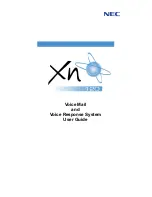
Production Data
WM9090
w
PD, November 2010, Rev 4.1
27
AUTOMATIC GAIN CONTROL (AGC)
The Speaker Output PGA incorporates an Automatic Gain Control (AGC) circuit. This feature
provides an automatic reduction in the speaker path gain in order to prevent clipping or power
overload at the loudspeaker. The AGC circuit provides two separate detection mechanisms to
identify clipping or power overload respectively. Each of these two mechanisms can be
independently configured to suit the loudspeaker characteristics and the desired audio response. The
two control mechanisms operate together to provide a flexible and effective automatic gain control
feature.
AGC CONTROL
AGC is enabled by setting the AGC_ENA register bit, as defined in Table 12.
The AGC can provide attenuation in the speaker output path - note that it can never apply additional
gain to boost the signal level. The maximum extent of the AGC attenuation can be controlled by
setting the AGC_MINGAIN register. This field sets the lowest gain level that can be selected by the
AGC under signal clipping or power limiting conditions.
When the signal conditions trigger the AGC to apply attenuation, the Speaker PGA gain is controlled
automatically by the AGC. In order to prevent ‘zipper noise’ from the gain adjustment, the PGA gain
is only changed when a signal zero-cross is detected. When AGC_RAMP = 1, then the gain
adjustment is restricted to a single gain step on each zero-cross. When AGC_RAMP = 0, then
multiple gain steps may be applied, if necessary, on each zero-cross.
Selecting single gain steps only will result in a more gradual gain adjustment, but the AGC may also
be slower to remove signal clipping under this selection. Note that the AGC attenuation has a step
size of 0.5dB, providing a high resolution of signal level control.
REGISTER
ADDRESS
BIT LABEL
DEFAULT
DESCRIPTION
R3 (03h)
Power
Management
(3)
14
AGC_ENA
0
AGC Enable
0 = Disabled
1 = Enabled
R100 (64h)
AGC Control
2
8
AGC_RAMP
0
AGC Ramp Control
Selects how the AGC gain
adjustment is applied
0 = Multiple gains steps per zero-
cross
1 = Single gain step per zero-cross
5:0
AGC_MINGAIN [5:0]
00000
AGC Minimum Gain
-57dB to +6dB in 1dB steps
(See Table 11 for AGC Minimum
Gain range)
Table 12 AGC Control
AGC ANTI-CLIP
The AGC incorporates two mechanisms for monitoring the signal conditions. One of these is the anti-
clip threshold detection. The anti-clip function measures the speaker supply voltage, SPKVDD, and
compares this with the output signal level. The difference between these voltages is referred to as
the headroom; to avoid clipping, the signal level must always be less than the supply voltage. If the
headroom is small (ie. the signal level is very close to the supply voltage), then clipping and distortion
will occur.
The anti-clip function can be disabled using the AGC_CLIP_ENA bit. It is enabled by default.
The headroom threshold at which the AGC will apply attenuation is set using the AGC_CLIP_THR
register. Values in the range -200mV to 800mV can be selected. When the signal headroom is
300mV, the distortion (THD) is approximately 1%. Therefore, if the anti-clip threshold is set to
300mV, then the AGC would aim to limit the distortion to be no worse than 1% under maximum
signal conditions. Selecting a larger headroom threshold will avoid clipping across a wider range of
operating conditions.
















































